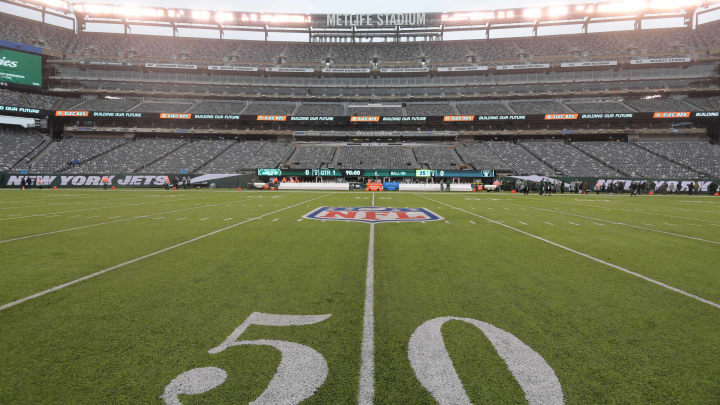New York Jets have one of the worst NFL Draft records according to data analysis

One of the primary reasons why the New York Jets are (again) in a rebuilding mode has to do with the failure to properly draft, a draft record that is among the worst in the NFL.
The Jets failed miserably in the NFL Draft during a four-year stretch beginning in 2011. During that time period, the Jets had the third worst draft record in the league according to an analytics study conducted by OverTheCap.com.
Only 24.24% of all drafted players by the Jets during that time exceeded expectations, according to the study.
Draft Winners & Losers from 2011-2014 (all rookie contracts have been completed) according to the Fitzgerald-Spielberger Draft Chart
— Brad Spielberger, Esq. (@SpielbergerBrad) March 10, 2020
Note: not sorted by Total value added, but by Value over Expectation
Also shows the % of players each team drafted that exceeded expectations pic.twitter.com/JsBWSpmSv7
In this study of draft picks, OverTheCap.com studied the draft record of teams beginning in 2011 through 2014. They took data from all 32 teams and compared every contract to the average of the top five contracts at a given position.
Head spinning? There’s a cure for that.
Brad Spielberger, who ran the analysis, gave an example, saying that if “the top five guys on average made $10 million per year, a guy signing at $8 million per year would be 80% of T5APY.”
From that data, the Jets don’t exactly shine. It also explains why few if any draft picks from those draft classes are on the current roster. That the Jets got limited returns from those four drafts meant that they put an overreliance on undrafted rookie free agents and free agents in general.
In turn, the lack of veteran talent on the roster that was drafted by the organization has obviously hurt a franchise that is without a playoff appearance since the 2010 season. It hasn’t been a trickle-down effect. It has been a monsoon of drafted talent that has washed out with the organization.
Those players, if they had been successful picks, would have ideally been the current core of the Jets the past couple of years. It was a core of drafted players such as Nick Mangold, D'Brickashaw Ferguson, Darrelle Revis and David Harris among others that formed the spine of the Jets consecutive championship game teams a decade ago.
“The Jets draft picks underperformed as compared to the average player taken in the same draft range,” Spielberger said.
‘Where a draft pick could be expected to sign a second contract at X percent, on average the Jets players were signing for X-8.5%.”
That’s not so good.
Cornerback, safety and wide receiver were the worst results for the Jets according to the data.
“From 2011-2014, the New York Jets struggled mightily to scout top talent in the NFL Draft,” Spielberger said.
“Most notably, the Jets used premium draft picks on defensive backs Dee Milliner (No. 9 overall, 2013) and Calvin Pryor (No. 18 overall, 2014), neither of which saw the end of their rookie contracts in the NFL.”
Those two picks, made by former general manager John Idzik, help explain the Jets roster decline in recent years. The Jets have been spending the last few years trying to get out of the hole of poor drafting, with limited if any success.
The Jets fired general manager Mike Maccagnan after last year’s NFL Draft was widely panned and the team was curiously underwhelming in free agency. Now under general manager Joe Douglas, who has a solid background in the NFL Draft, the hope is that the Jets can begin drafting well again.
Tannenbaum was woefully underappreciated for the job he did in building the Jets up using the draft.
It is the cornerstone of the team’s current rebuilding effort. Over the past few drafts, the Jets have done well including Pro Bowl safety Jamal Adams and franchise quarterback Sam Darnold points to a better draft haul.
“The Jets decided to part ways with longtime front office member Mike Tannenbaum after a down year in 2012 that was preceded by a few less-than-stellar draft classes,” Spielberger said.
“However, Tannenbaum had a limited draft arsenal and a competitive roster, making back-to-back AFC Championship games in 2009 and 2010. The drafting issues were only exacerbated by the hiring of John Idzik, who undoubtedly performed worse than Tannenbaum.”
